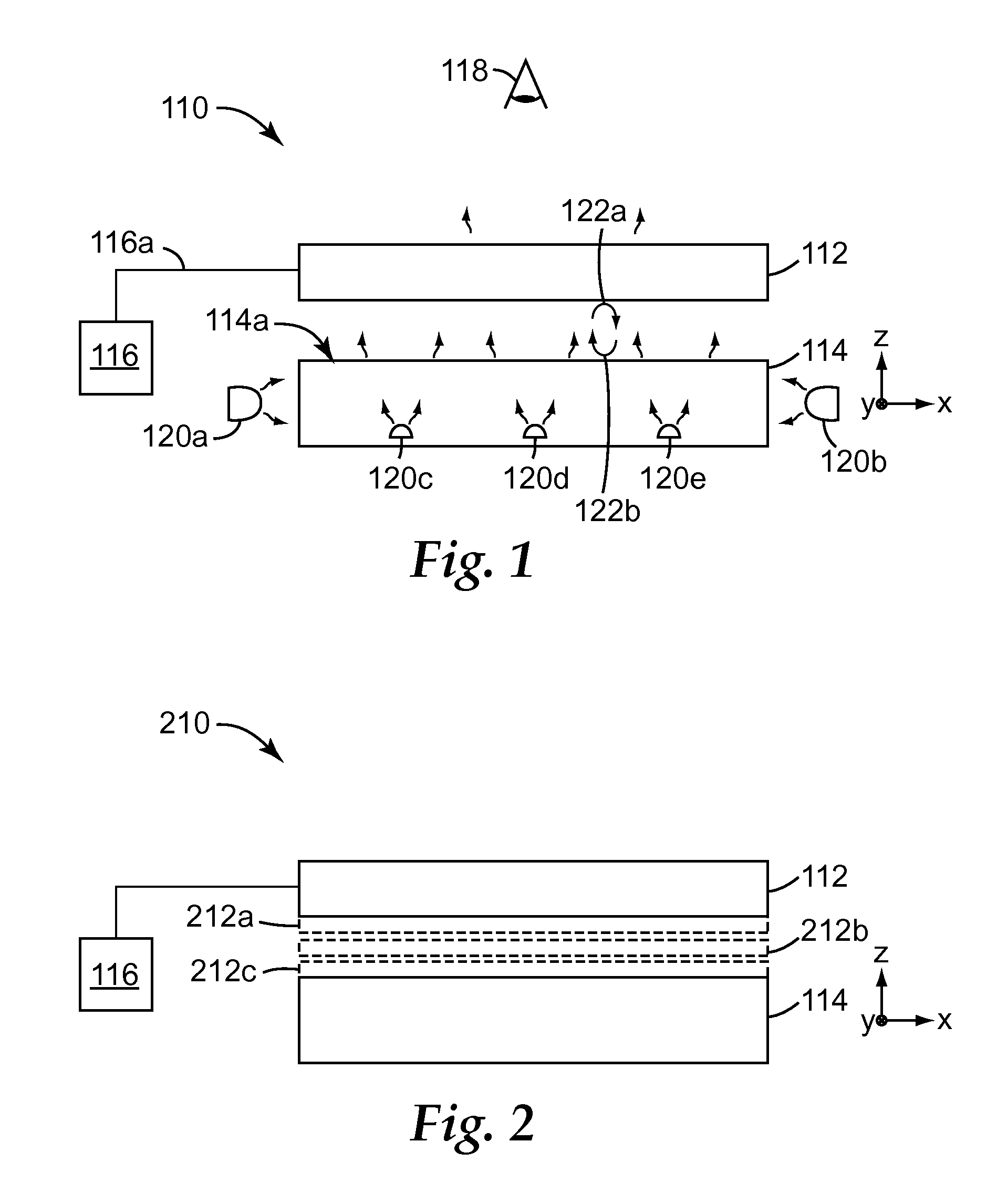Immersed reflective polarizer with angular confinement in selected planes of incidence
a reflective polarizer and angular confinement technology, applied in the field of optical films, can solve the problem that the law of snell's law no longer operates to prevent the propagation of light through the film at supercritical, and achieve the effects of simplifying the manufacturing process, reducing inventory, and enhancing the brightness and contrast ratio of the display
- Summary
- Abstract
- Description
- Claims
- Application Information
AI Technical Summary
Benefits of technology
Problems solved by technology
Method used
Image
Examples
Embodiment Construction
[0039]Most optical films that are suitable for use in displays, backlights, luminaries, and the like have optical transmission and reflection characteristics that change with the angle of incidence of light. Multilayer optical films, for example, which comprise a plurality of microlayers that are sufficiently thin so that some light is reflected from a plurality of the microlayer interfaces to undergo constructive or destructive interference to provide the desired reflective or transmissive properties, are specifically designed for a particular range of entrance and / or exit angles in a particular medium—typically air. Similarly, surface structured films, such as prismatic brightness enhancement films, are also specifically designed for a particular range of entrance and / or exit angles in air. For given incidence angles in air, propagation angles and exit angles for such optical films are determined by well known formulas such as Snell's law for refraction or other formulas such as t...
PUM
 Login to View More
Login to View More Abstract
Description
Claims
Application Information
 Login to View More
Login to View More - R&D
- Intellectual Property
- Life Sciences
- Materials
- Tech Scout
- Unparalleled Data Quality
- Higher Quality Content
- 60% Fewer Hallucinations
Browse by: Latest US Patents, China's latest patents, Technical Efficacy Thesaurus, Application Domain, Technology Topic, Popular Technical Reports.
© 2025 PatSnap. All rights reserved.Legal|Privacy policy|Modern Slavery Act Transparency Statement|Sitemap|About US| Contact US: help@patsnap.com



